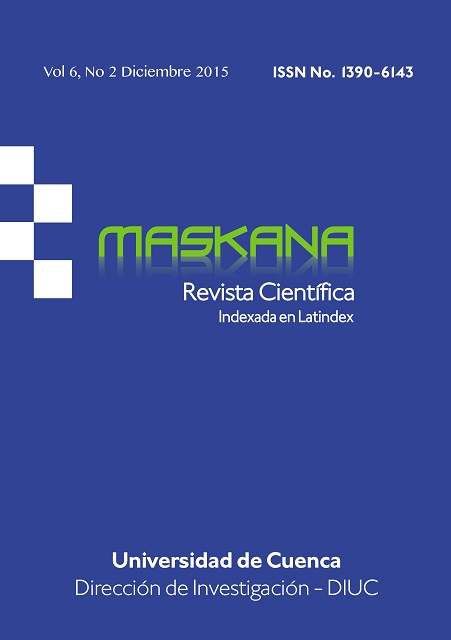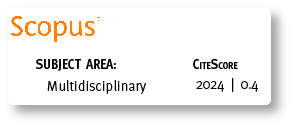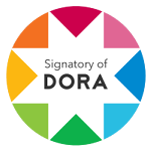The relations of coexistence of children and adolescents who are deaf or hard of hearing: A qualitative exploratory study
DOI:
https://doi.org/10.18537/mskn.06.02.09Keywords:
children, adolescents, deafness, family, school, health servcies, living, languageAbstract
Qualitative exploratory study with phenomenological focus probing the relation of 10 Deaf and Hard of Hearing Children and Adolescents (D/HH-CA) with their family, health professionals, teachers, friends and the deaf community; the resilience qualities of those children and adolescents seeking shelter with their mothers who possess relative high levels of stress nurtured by the difficulties to support and intervene with them, while fathers in general retreat in their feelings not seeing the true dimension and leaving home when they learn that their child is deaf. Professionals lack strategies for care and communication, are distant from deaf and hard of hearing children and adolescents, and families are usually disappointed in the poor quality they receive from health services. Teachers and friends of the D/HH-CA avoid them, causing unpleasant feelings and early dropouts from school. Those who have the opportunity to attend a school for deaf more easily develop resiliency and selfesteem. Half of the surveyed D/HH-CA use hearing aids and all use the sign language or family signs to communicate with family and friends. The D/HH-CA using hearing devices maintain no contact with the deaf community in their region, nor do the children not having access to hearing aids and for whom the sign language is the primary language, maintain contact with the children having hearing aids. D/HH-CA’s, like all other children and adolescents, have their dreams and aspirations to make it in life. The survey-based research provided hypotheses to direct in future research on the development of family strategies to cope with deaf and hard of hearing children, to improve the resilience of those children, and to enhance their coexistence and partnership relation.
Downloads
Metrics
References
Alford, R., K. Arnos, M.W. Fox, J. Lin, C. Palmer, A. Pandya, H. Rehm, N. Robin, D. Scott, C. Yoshinaga-Itano, 2014. American College of Medical Genetics and Genomics: Guideline for the clinical evaluation and etiologic diagnosis of hearing loss. Genet. Med., 16(4), 347-55.
Barnett, S., 2002. Communication with deaf and hard hearing people: A guide for medical education. Academic Medicine, 72(7), 694-700.
Bourke, S., I. Burgman, 2010. Coping with bullying in Australian schools: how children with disabilities experience support from friends, parents and teachers. Disability and Society, 25(3), 359-371.
CONADIS, 2015. Consejodediscapacidades.gob.ec [página en Internet]. Estadística personas con discapacidad [actualizado 2015 Agosto; citado 2015 marzo]. Disponible en http://issuu.com/fercho77/docs/estadistica_02_de_agosto.
Corvera, J., F. González, 2000. Psicodinámia de la sordera. Gac. Med. Mex., 136(2), 139-152.
DesGeorges, J., 2003. Family perceptions of early hearing, detection, and intervention systems: Listening to and learning from families. Mental Retardation and Developmental Disabilities, Research Reviews, 9, 89-93.
Dominguez, A., 2009. Educación para la inclusión de alumnos sordos. Revista Latinoamericana de Educación Inclusiva, 3(1), 45-61.
Fahl, C., A. Gesueli, I. Rodrigues, 2013. A relacao sujeito, linguagem na construcao da identidade surda. Educ. Soc., 34(123), 509-527.
Fadda, S., 2011. Psycological aspects when counseling families who have children with cochlear implants. J. Matern. Fetal Neonatal Med., 24:S(1), 104-106.
Fuentes, M., 2000. Los numerales en la lengua de signos catalana. Revista de Lingüística, 12, 19-35.
Kobosko, J., 2011. Parenting a deaf child. How hearing parents cope with the stress of having deaf children. J. Hear. Sci., 1(3), 38-42.
Herrera, F., 2005. Habilidad lingüística y fracaso lector en los estudiantes sordos. Ensayos Estudios Pedagógicos, 1(2), 121-135.
Huerin, V., C. Duhalde, M.P. Vernengo, M.J. Esteve, J.A. Laplacette, C. Raznoszczyk, 2012. Regulación afectiva y simbolización. Estudio comparativo entre niños oyentes y no oyentes en edad preescolar. Anu. Investig., 19(2), 233-241.
Huiracocha, L., C. Almeida, K. Huiracocha, A. Arteaga, J. Arteaga, P. Barahona, J. Quezada, 2013. Explorando los sentimientos de los padres, la familia y la sociedad a las personas con Síndrome de Down: Estudio Observacional. Maskana, 4(2), 47-57.
Huiracocha, L., L. Brito, M.E. Pérez, R. Clavijo, S. Sempértegui, S. Blume, 2015. “Su guagua no escucha nada”: Confronting the deafness of a child. Disabil. Soc., 30(4), 556-568.
Lederberg, A., T. Golbach, 2002. Parenting stress and social support in hearing mothers of deaf and hearing children: a longitudinal study. J. Deaf Stud. Deaf Educ., 7(4), 330-345.
Langereis, M., A. Vermeulen, 2015. School performance and wellbeing of children with CI in different communicative- educational environments. Int. J. Pediatr. Otorhi., 79, 834-839.
Maddalena, V., F. O´Shea, M. Murphy, 2012. Palliative and end-on life care in Nwefoundland´s deaf community. J. Palliat. Care, 28(2), 105-12.
Martin, D., Y. Bat-Chava, 2003. Negotiating deaf-hearing friendships: coping strategies of deaf boys and girls in mainstream schools. Child Care Health Dev., 29(6), 511-521.
Martinez, R., A. Landa, 2001. Niveles lectores de los niños sordos españoles. Revista de Psicología Universitas Tarraconensis, 23(1), 58-71.
Monsalve, A., 2002. La compleja apuesta en la educación de los niños sordos. Aula Abierta, 79, 59-67.
Moeller, M.P., G. Carr, L. Seaver, A. Stredler Brown, D. Holzinger, 2013. Best practices in family centered early intervention for children who are deaf or hard of hearing: an International Consensus Statement. J. Deaf Stud. Deaf Educ., 18(4), 429-445.
Muñoz-Baell, I, M.T. Ruiz-Cantero, C. Álvarez-Dardet, E. Ferreiro-Lago, E. Aroca-Fernández, 2011. Comunidades sordas: ¿pacientes o ciudadanas? Gac. Sanit., 25(1), 72-78.
Organización Mundial de la Salud, 2015. Sordera y pérdida de la audición, 2013 [actualizado 2015; citado marzo 2015]. Disponible en http://www.who.int/mediacentre/factsheets/fs300/es/.
Ortiz, M., 2006. El docente de niños sordos y el aprendizaje de la lectura y escritura. Un estudio de caso. Revista Latinoamericana de Lectura, 27(2), 14-21.
Plotkin, R., P. Brice, J. Reesman, 2014. It is not just stress: Parent personality in raising a deaf child. J. Deaf Stud. Deaf Educ., 19(3), 347-357.
Steinberg, A., S. Barnett, H. Meador, E. Wiggins, P. Zazove, 2006. Health Care System Accessibility: Experiences and perceptions of Deaf People. J. Gen. Intern Med., 21, 260-266.
Suárez, R., J. Rodríguez, V. Castro, 2006. La discapacidad auditiva: Impacto en la familia e importancia del apoyo social. Revista Qurriculum, 19, 221-232.
Downloads
Published
How to Cite
Issue
Section
License
Copyright © Autors. Creative Commons Attribution 4.0 License. for any article submitted from 6 June 2017 onwards. For manuscripts submitted before, the CC BY 3.0 License was used.
![]()
You are free to:
 |
Share — copy and redistribute the material in any medium or format |
 |
Adapt — remix, transform, and build upon the material for any purpose, even commercially. |
Under the following conditions:
 |
Attribution — You must give appropriate credit, provide a link to the licence, and indicate if changes were made. You may do so in any reasonable manner, but not in any way that suggests the licenser endorses you or your use. |
| No additional restrictions — You may not apply legal terms or technological measures that legally restrict others from doing anything the licence permits. |









